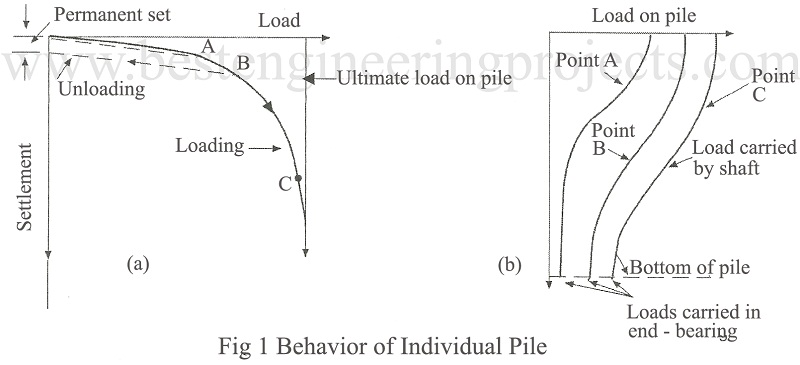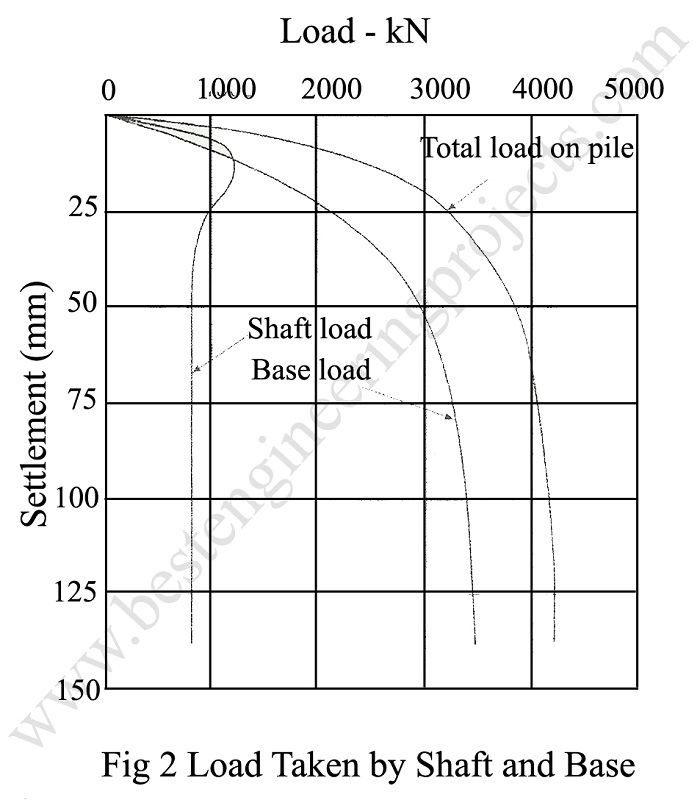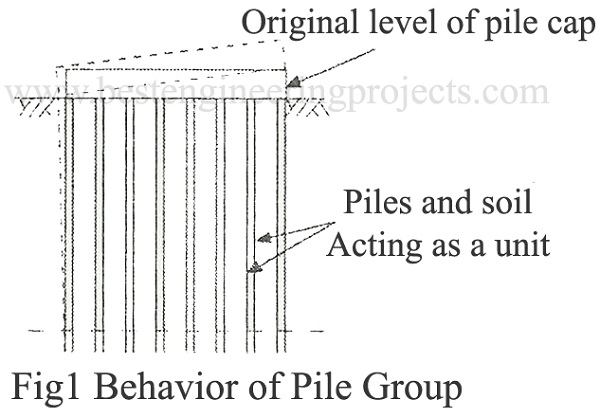Behavior of Single pile Under Load
Figure 1 shows a load settlement curve for a pile driven into a uniform soil. At early stages of loading the settlement is very small. The settlement at this stage is wholly elastic due to elastic deformation of pile and surrounding soil. When the pile is unloaded the deformation is almost wholly recovered as shown in Fig.1 (a). Strain gages attached along the pile shaft and base indicate that at small loads the pile shaft takes all the applied loads by friction developed between pile and surrounding soils.
As the load is increased, the load settlement curve steepness and release of load from point B will again show some elastic rebound but the head of the pile will not return to its original position. This indicates that some permanent set has taken place. The strain gages indicate that at this stage also the shaft takes increased amount of load but the load-on shaft not be equal to the total applied load. Some part of the load is shared by base.
When the load approaches the failure point C, then the settlement increases rapidly with the further increase in load. At this stage, the load shared by pile shaft is less than that taken just before failure. .
Generally the vertical movement of the pile, which is required to full mobilization of end resistance, is much greater than the skin friction. If the load on the pile shaft and base are measured separately, the load settlement curve will be as shown in Fig.2. The figure shows that the skin friction on the shaft increases at the peak value and then falls with increasing strain. On the other hand the base load increases progressively until complete failure occurs.
Behavior of Pile Group Under Loads
The failure mechanism of a group of pile is very much different from that of a single pile. In a pile group the piles and soil enclosed by the group act as a single unit. Block failure may occur in a pile group as in the ease of spread foundation and slip plane occurs at the perimeter of the pile as shown in Fig.1. The failure load of group is not equal to the failure load of a single pile multiplied by the numbers of piles in the group. In sands it may be more than this and in clay it is likely to be the less. This is controlled by the efficiency of the group. The efficiency of a pile group is defined as a ratio of average load per pile in a group at failure to the failure load of a single comparable pile.
The mode of failure, which transforms from a single pile failure to block failure, depends very much in the spacing of piles in the group, shape of the group and the length of piles.
Definition of Failure Load – Piles fail by excessive settlement long before it achieves ultimate failure load. Ultimate failure load in case of piles is defined as the load which causes the settlement of one-tenth of pile diameter. This concept is widely accepted by engineers. However, this concept is not applicable to large diameter piles.


